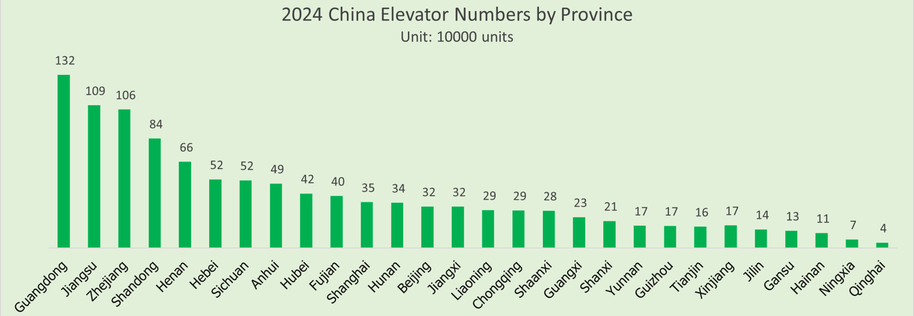China’s elevator market is booming, with over 3.5 million elevators in operation across residential, commercial, and public buildings in 2024. While this growth supports urban mobility and economic development, it also raises a pressing concern: elevator safety. Many elevators, especially residential units, have surpassed 15 years of service, increasing the potential for mechanical failures and safety risks.
Elevator Numbers by Province
Some provinces lead the way in elevator ownership:
-
Guangdong: 1.32 million units
-
Jiangsu: 1.09 million units
-
Zhejiang: 1.06 million units
-
Shandong: 0.84 million units
Even smaller regions such as Ningxia and Qinghai have tens of thousands of elevators, each requiring regular inspections to ensure safe operation.


Shanghai: A Case Study in Elevator Safety
Shanghai’s elevator fleet exceeded 350,000 units in 2024, with 86,000 elevators over 15 years old. Among them, 46,000 are residential elevators, representing 28% of all residential elevators. Leading brands include Mitsubishi, Kone, Otis, Schindler, and Hitachi.
To address safety concerns, Shanghai launched a comprehensive elevator inspection campaign:
-
Nearly 10,000 inspection personnel deployed
-
Over 4,800 elevator-related companies reviewed
-
More than 7,000 elevators inspected, 3,000+ issues resolved
-
Emergency rescues: 18,000 alarms responded to, rescuing 22,000 passengers, with an average rescue time of 12 minutes and 19 seconds
-
Annual inspection pass rate: 87%; self-inspection pass rate: 68%
Additionally, 12 types of elevator components and labor fees for 147 maintenance units were standardized, and maintenance contracts for 85,000 residential elevators were uploaded to a public platform via smart elevator codes, enhancing transparency for residents.
Why Elevator Inspections Are Essential
-
Aging Infrastructure: Elevators over 15 years old are more prone to mechanical and electrical issues.
-
Regulatory Compliance: Chinese authorities mandate regular inspections to meet national safety standards.
-
Risk Mitigation: Inspections prevent accidents, reduce liability, and protect building occupants.
-
Modernization Needs: Older elevators may require retrofitting or modernization to meet current safety and efficiency standards.
The Role of Professional Inspection Services
At [Your Company], we provide comprehensive elevator inspection and maintenance services, including:
-
Full safety audits and risk assessments
-
Maintenance and modernization guidance
-
Compliance support for local and national regulations
-
Transparent reporting to building owners and residents
Professional inspections help building managers identify potential hazards early, ensure regulatory compliance, and maintain the safety and confidence of residents and employees.
With China’s elevator fleet both growing and ageing, 2024 marks a critical year for elevator safety. Whether in Shanghai or across other provinces, building owners, operators, and property managers must prioritize regular inspections, maintenance, and modernization. Proactive measures protect lives, reduce liability, and contribute to safer, more reliable urban mobility.
